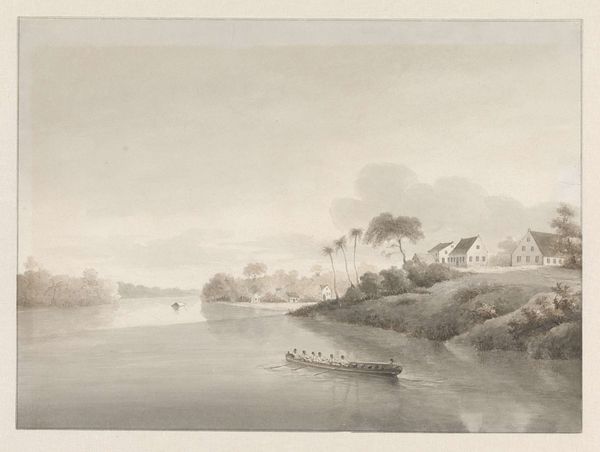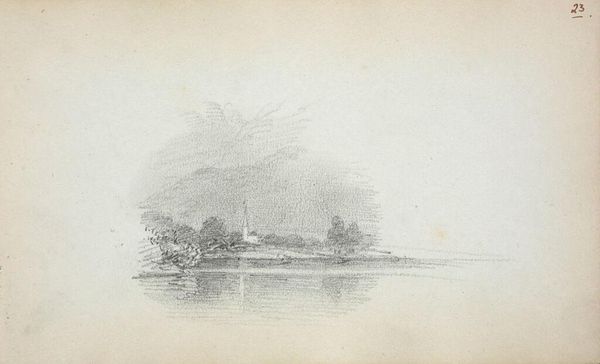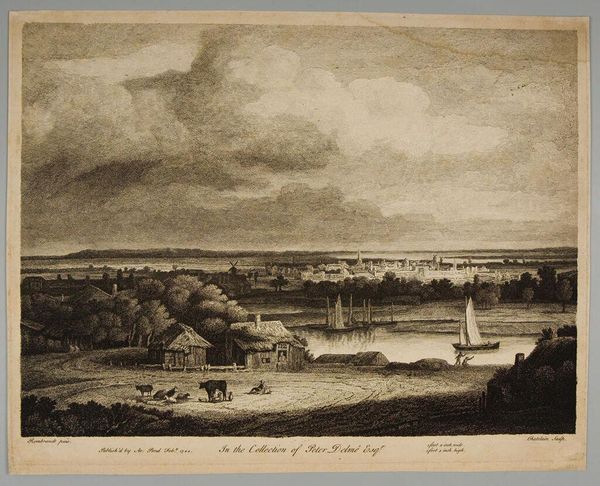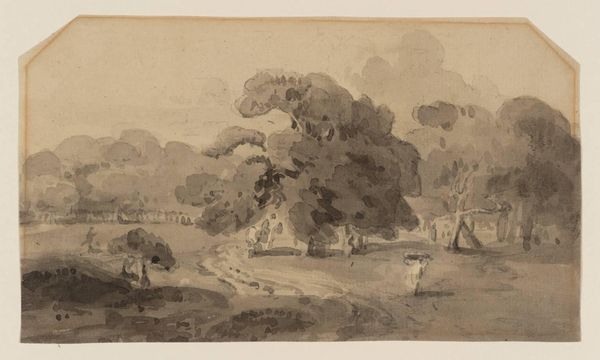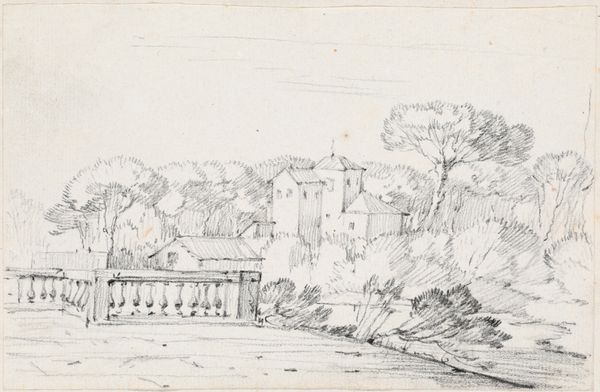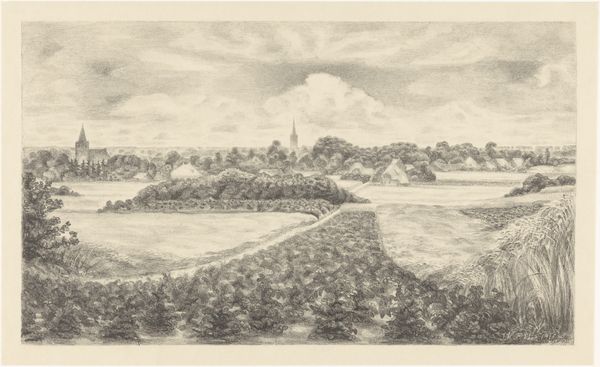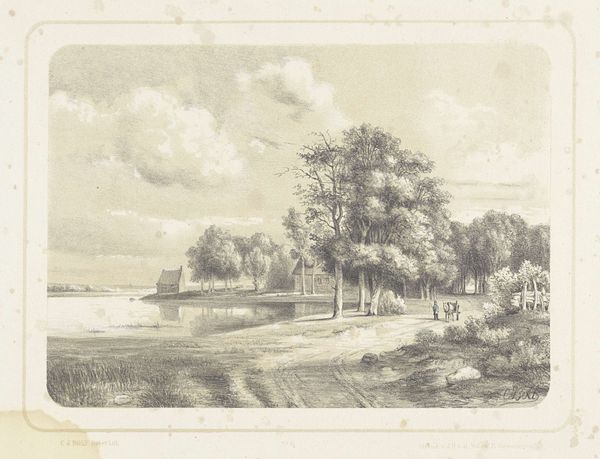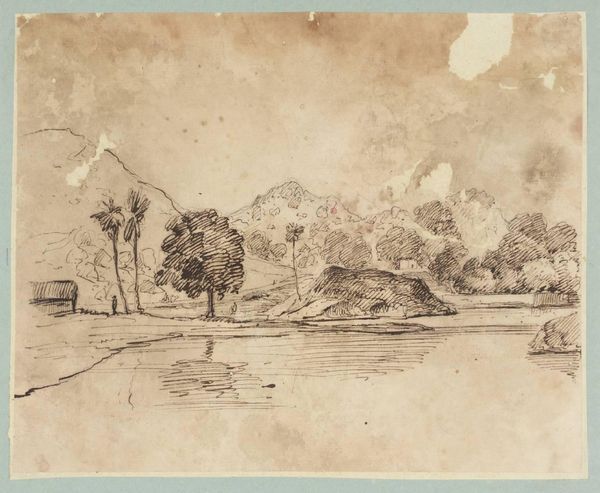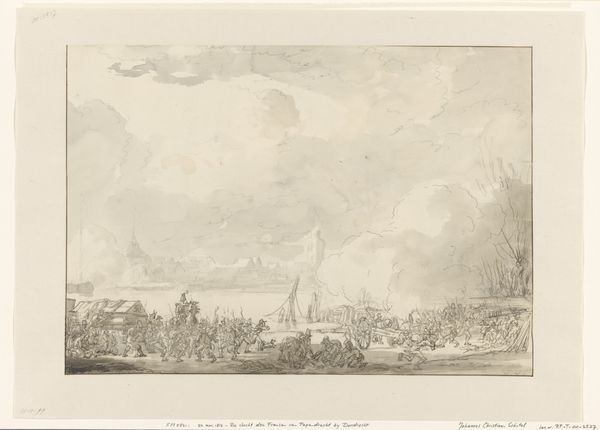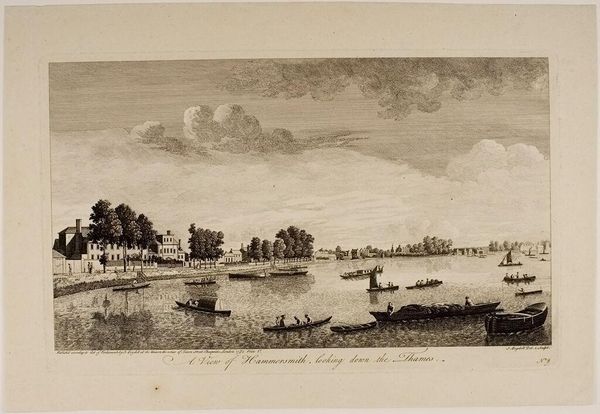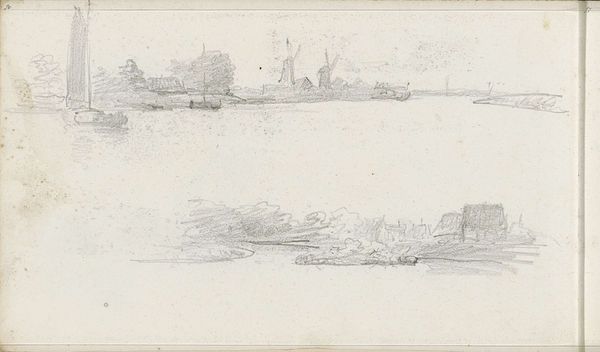
drawing, plein-air, ink, pencil
#
drawing
#
plein-air
#
landscape
#
ink
#
mountain
#
pencil
#
charcoal
Dimensions: 5 7/8 x 8 5/8 in. (14.9 x 21.9 cm)
Copyright: Public Domain
Art Historian: Editor: Hi, there. I chose Mary Newbold Sargent’s “Mount Athos, 1904 (from Sketchbook)” created with pencil and ink. It's quite atmospheric, a monochrome landscape drawing, and those brooding clouds seem to dwarf the buildings below. What do you see in this piece? Art Historian: Well, immediately I see a depiction laden with the weight of history and gendered space. Mount Athos is, of course, a deeply patriarchal monastic republic where women are forbidden. Sargent, as a female artist, drawing this space... It poses questions, doesn't it? About access, representation, and the male gaze. Editor: I never considered that. It does shift the way I see the landscape. I guess, initially, I just took it at face value as a place, and didn't read the drawing itself as an act. Art Historian: Exactly! Consider Sargent's position. What does it mean for a woman artist to document, essentially, a forbidden territory? Is she subverting the male gaze? Is she passively recording? What kind of statement, subtle or explicit, might she be making? What kind of access would a woman even have to such a location, bearing in mind its historical exclusion of women? Editor: So, is the very act of her sketching Mount Athos a commentary, regardless of her conscious intent? The act challenges a spatial, patriarchal boundary, at least on some level? Art Historian: Precisely! Art doesn't exist in a vacuum. Sargent's identity, the historical context of Mount Athos, and the very medium she employs – a quick sketch, perhaps implying a fleeting glimpse – all contribute to a powerful narrative. Editor: This is fascinating. I definitely viewed the landscape in such a direct manner without considering the sociocultural implications involved, not just of landscapes, but even the act of sketching it. Thank you! Art Historian: The beauty of art lies in these layers of meaning, right? Challenging our perspectives and inciting questioning on many things that exist in our societies. Glad to have helped shed new light on this interesting piece with you.
Comments
No comments
Be the first to comment and join the conversation on the ultimate creative platform.

